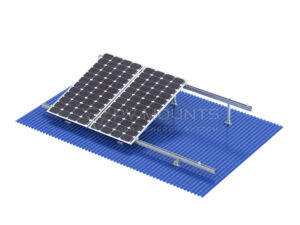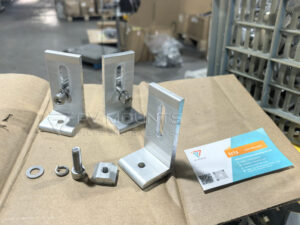Solar panels, a cornerstone of modern renewable energy systems, are susceptible to various environmental challenges, one of which is interference from birds. These avian visitors can significantly affect the performance and durability of solar installations. Birds are often attracted to solar panels for their warmth and the perceived shelter they provide. However, their presence can lead to physical damage from pecking, blockage of sunlight due to droppings, and even nesting activities that disrupt the structural integrity of the installations. This introduction explores the importance of implementing effective bird protection measures, underscoring the necessity due to common issues such as decreased energy efficiency and increased maintenance costs.
Understanding Bird Behavior
To effectively protect solar panels from birds, it is essential to understand why these installations attract avian species in the first place. Solar panels often provide a warm, sheltered environment that is appealing to birds for resting and nesting. The flat, uninterrupted surfaces of the panels can mimic natural habitats, while the warmth generated by the panels themselves offers comfort during colder months. Additionally, birds may be attracted to the area around solar panels if food sources are abundant.
Seasonal behavior significantly influences bird interactions with solar installations. During nesting seasons, the incidence of birds near solar panels can increase as they search for secure sites to raise their young. This section discusses these behaviors and the patterns observed in bird activities around solar panels, providing a foundation for developing targeted deterrent strategies.
Physical Deterrents and Barriers
Addressing the challenge of birds on solar panels effectively requires a combination of knowledge and the right tools. Physical deterrents and barriers serve as the first line of defense, preventing birds from accessing and damaging the panels. Spikes, for instance, prevent birds from landing comfortably on the panels, thereby discouraging them from staying. Netting offers another layer of protection by covering the perimeter of the solar array, preventing birds from getting close enough to cause harm.
This section also covers the proper installation of these deterrents, which is crucial for their success. For example, spikes should be installed evenly across all accessible edges of the solar panels, and netting should be secured tightly around the entire installation without sagging or gaps that could allow birds to enter. Tips on maintaining these barriers and ensuring their long-term effectiveness are also discussed, ensuring that solar panel owners can achieve the best possible outcomes from their bird deterrent efforts.
Technological Solutions
Beyond physical barriers, technological advancements offer sophisticated methods to deter birds from solar panels. Sonic devices, which emit noises unpleasant to birds but generally inaudible to humans, can effectively keep birds at bay without causing them harm. These devices can be programmed to produce a range of sounds, from predatory calls to distress signals of common bird species, thereby creating an inhospitable environment for them.
Reflective tapes and other optical deterrents leverage birds’ aversion to intense light or unexpected visual signals. These can include reflective decals or shiny, moving objects that unsettle birds. The effectiveness of these solutions often depends on the local bird populations and environmental conditions, necessitating some trial and error to find the most effective combination.
For instance, the placement of sonic devices should cover the entire area of the solar array and be free from obstructions that might block the sound waves. Similarly, reflective materials need to be placed in locations where sunlight can hit them directly, maximizing their deterrent effect.
Maintenance and Monitoring
Regular maintenance and monitoring form a crucial component of protecting solar panels from birds. Scheduled inspections help identify potential vulnerabilities or early signs of bird interference before they escalate into more significant problems. This section outlines a protocol for periodic checks, emphasizing areas most likely to be affected by birds, such as corners and edges where they might attempt to nest.
Moreover, consistent cleaning is vital to remove bird droppings, which not only reduce the efficiency of solar panels by blocking sunlight but can also corrode the surface over time. Recommendations for safe and effective cleaning methods are provided, ensuring that maintenance efforts do not inadvertently damage the panels. Additionally, this section discusses the importance of logging maintenance activities to track the effectiveness of various deterrent methods and make informed adjustments over time.
Legal and Environmental Considerations
When implementing measures to protect solar panels from birds, it is important to consider both legal restrictions and ethical implications regarding wildlife. Many regions have specific regulations governing the treatment of birds and other wildlife, which can include prohibitions against harming certain species. This section explores these legal frameworks, offering guidance on how to comply with local wildlife protection laws while effectively deterring birds from solar installations.
The discussion also covers the ethical aspects of bird deterrents, advocating for methods that deter without causing harm. Ethical considerations are crucial for maintaining community support and ensuring that environmental sustainability goals are met, aligning bird protection efforts with broader ecological objectives. Practical advice on selecting humane and legally compliant bird deterrent strategies is provided, helping solar panel owners make responsible choices that benefit both their installations and the local wildlife.
Continuing with these effective strategies, the next sections will delve deeper into how integrating bird protection into solar panel design not only solves immediate problems but also contributes to the system’s longevity and efficiency.
Enhancing Solar Panel Longevity
Implementing effective bird deterrent strategies not only addresses immediate issues but also contributes significantly to the overall longevity and efficiency of solar panel systems. When birds are prevented from nesting under or damaging the panels, the risk of mechanical damage and efficiency losses is greatly reduced. This section highlights how integrating bird protection measures into the initial design and regular maintenance of solar installations can lead to increased energy output and longer operational lifespans.
By incorporating bird deterrent features like protective mesh or design tweaks that discourage perching and nesting, solar panel systems can operate at optimal levels with minimal interruptions. This proactive approach not only safeguards the physical condition of the panels but also maximizes the return on investment for solar energy projects. Additionally, discussions on the latest materials and technologies suitable for these purposes provide readers with up-to-date options for enhancing their solar panel setups.
Conclusion and Best Practices
To effectively protect solar panels from birds, a combination of understanding, strategic planning, and ongoing management is essential. The strategies outlined in this article—from physical barriers to technological innovations and regular maintenance routines—form a comprehensive approach to mitigating the risks birds pose to solar installations.
As we conclude, it’s important to revisit the best practices that have been identified as most effective:
- Regularly inspect and maintain solar installations to ensure that bird deterrent measures are intact and functional.
- Choose bird deterrent technologies that are humane and comply with local wildlife protection laws.
- Integrate bird deterrent strategies during the initial design phase of solar panel systems to prevent potential issues from arising.
By adhering to these practices, solar panel owners can protect their investments while contributing to environmental conservation efforts. The protection of solar panels from birds not only enhances the efficiency of these renewable energy sources but also ensures that they remain a viable and sustainable option for the future.













